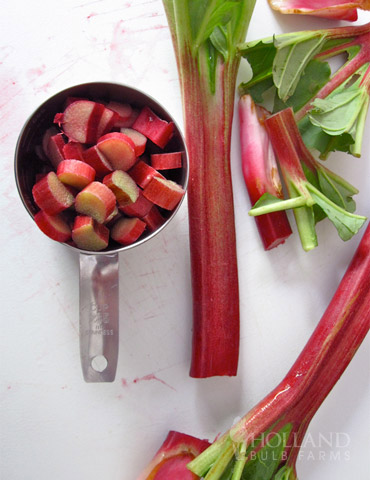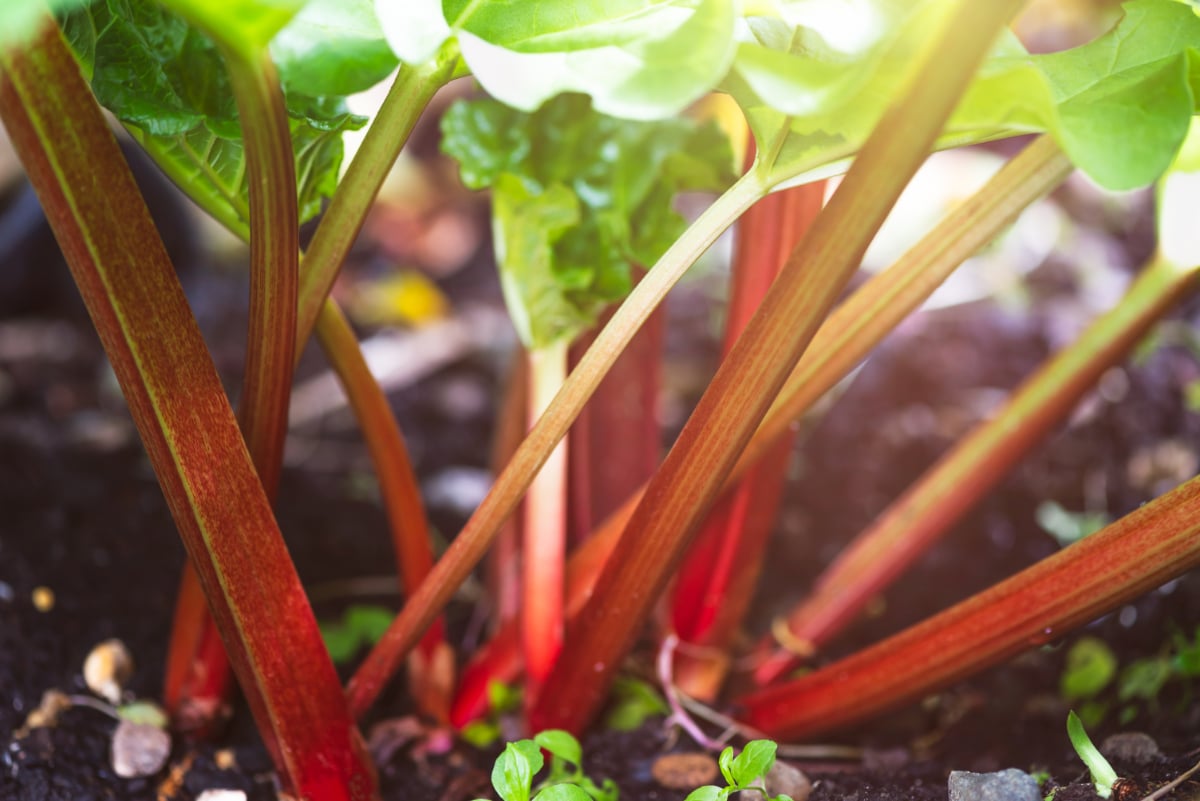15+ Cutting Rhubarb Plants
They should not be eaten. Use a sharp knife to cut off the rhubarbs leaves and trim each root end.

15 Super Cool Indoor Plants In Glass Jars Ideas Plant In Glass Plants In Glass Jars Chinese Money Plant
How to Pick Rhubarb.

15+ cutting rhubarb plants. Transfer the rhubarb to a bowl of water then drain and leave to dry. Slide hand down stalk and gently but firmly twist and pull. The plant requires winter temperatures below 44C 40F to break dormancy.
You can help us to keep Scotland Gunnera tinctoria-free by reporting any sightings of the plant in the wild to Scotlands Environemt Web. The stalk will pop and separate from the rhubarb plant at the root and come cleanly away. We are working on an ambitious project to wipe out giant rhubarb in in the Western Isles and want to stop its spread on the west coast of Scotland and beyond.
Rhubarb can propagated by planting pieces obtained by dividing the crown. Find a stalk on your rhubarb plant thats ready to be picked. Space rhubarb plants about 4 feet apart and plant the roots 1 to 3 inches below the surface of the soil with buds facing up.
Rhubarb will keep frozen for up to a year. The second is to gently pull the stalk while gently leaning it to one side until the stalk breaks off from the plant. Lean it to the side and in one motion gently twist and pull the stalk up.
Originally from South America the distinctive large leaved plant was introduced as a garden. Harvest rhubarb in late May or June by cutting the stems off with a sharp knife at soil level. Never harvest all the stalks off your rhubarb plant.
You can divide earlier if you desire more plants. How to Harvest Rhubarb. Although the best rhubarb yields will typically come from patches that are about 8-10 years or younger.
It is best to harvest several times removing a few stems from each plant each time. Click to see full answer. Grasp the edge of the slit and pull down peeling a strip of stringy fibers off of the surface of the rhubarb.
If sowing indoors use small pots or modules filled with seed compost. Dividing can be done either in the spring or the fall with equal success but I have found early spring is best. Grasp the stalk near the bottom.
A good rule of thumb is to divide the plants every 5 to 6 years in fall or early spring. When harvesting select stalks that are 12 to 15 inches long from leafy healthy-looking rhubarb. Water well at the time of planting.
Pieces are taken from 4-5 year old crowns. There are two ways how to harvest rhubarb. Check out this video to learn more about how to plant rhubarb.
Cut a small slit under the outer edge of the rhubarb skin at one of the stalk ends. Rhubarb crowns require shallow planting around 4 inches deep but because plants are such heavy feeders you should dig planting holes at least a foot deep. Protect seedlings and young plants from slugs and snails.
The twisting and pulling motion should be gentle. If your soil is heavy clay you may want to consider planting rhubarb in raised beds filled with soil designed especially for that kind of growing environment such as Miracle-Gro Performance Organics Raised Bed Mix. To trim rhubarb use a sharp knife and cut along the stalk base where it connects to the crown.
Harvesting the crop slowly allows the remaining stems to draw on the energy of the plant. Place rhubarb pieces into the water and leave them there for one minute. Plants will grow best in a fertile well-draining soils rich in organic matter with a pH between 60 and 70.
Water well and continue watering and potting on as they grow. Rhubarb may not die back completely if temperatures remain above 40 degrees Fahrenheit but dead and damaged leaves can still be removed throughout winter cutting them with shears or a knife. Freeze the individual pieces and then place them together in a freezer-safe container.
If the rhubarb stalk doesnt come away immediately grasp it lower and try leaning it. Many rhubarb patches will continue to produce a good harvest for 15 years or more. One is to use a sharp knife or shears to cut off stalks that are at least 10 inches 25 cm or longer.
Pulling is better than cutting but if you must cutting is okay too it will just take a little longer to recover and may leave the plant vulnerable at the cut but lets face it rhubarb is tough. Transplant the young rhubarb plants into their final position in autumn or. Rhubarb will grow optimally at temperatures of 1520C 5968F and is adapted to high rainfall as long as there is adequate drainage.

Pin On Gardening Skills

Zz Plant Easy Low Light Houseplant Mrbrownthumb Plants House Plants Kitchen Plants

Ornithogalum Dubium Orange Cream Showy Flowers Easy To Grow Bulbs Perennial Bulbs

Advertising Graphic Design Photo Manipulation Design Graphic Design Ads Car Advertising Design

15 Beautiful Hanging Plants Ideas 40 Hanging Plants Plants Stone Landscaping

Yacon S Edible Tubers Are Sweet And Crunchy Giving It The Nickname Ground Apple Yacon Root Is Crunchy And A Little Bit Sweet And Great Tubers Apple Growing

Heirloom Victoria Rhubarb Seed Heirloom Victoria Rhubarb Vegetable Seed Sustainable Living Garden 1 10 Vegetable Seed Heirloom Seeds Sustainable Living Garden

Vceblush Celeryseedcrispy Crunchy Pretty Etsy In 2021 Celery Growing Celery Celery Seed

Sadia Badiei Bsc Dietetics On Instagram I Used To Dip Raw Rhubarb Into Sugar As A Snack When I Was Raspberry Rhubarb Rhubarb Recipes Food Processor Recipes

Victoria Rhubarb Plant Holland Bulb Farms 75127

Sedum Autumn Joy Garden Housecalls Garden Plants Design Plants Sedum Garden

Frugal Gardening 5 Thrifty Recycling Tips Frugal Gardening Growing Vegetables Growing Herbs

16 Perennial Vegetables And Fruits Every Garden Needs Gardening

Pin On Patio Garden

Sun King Golden Japanese Spikenard Aralia Cordata Sun King Is A Golden Perennial That Acts Like A Shrub It S A Shade Garden Plants Plants Backyard Plants

Pin Pa Foodography

Stunning Plant Climbing For Garden Sheds And Raised Garden Beds Visit Www Gardenshedco Co Nz A World Of Plants Flores